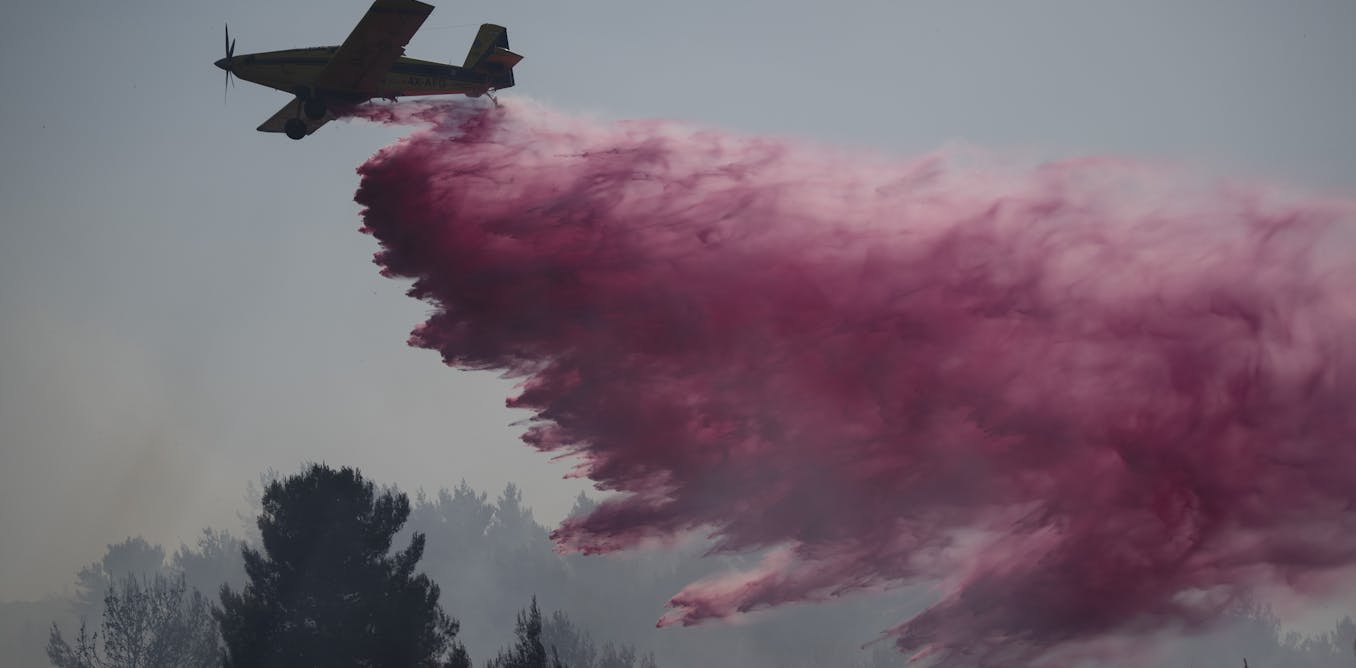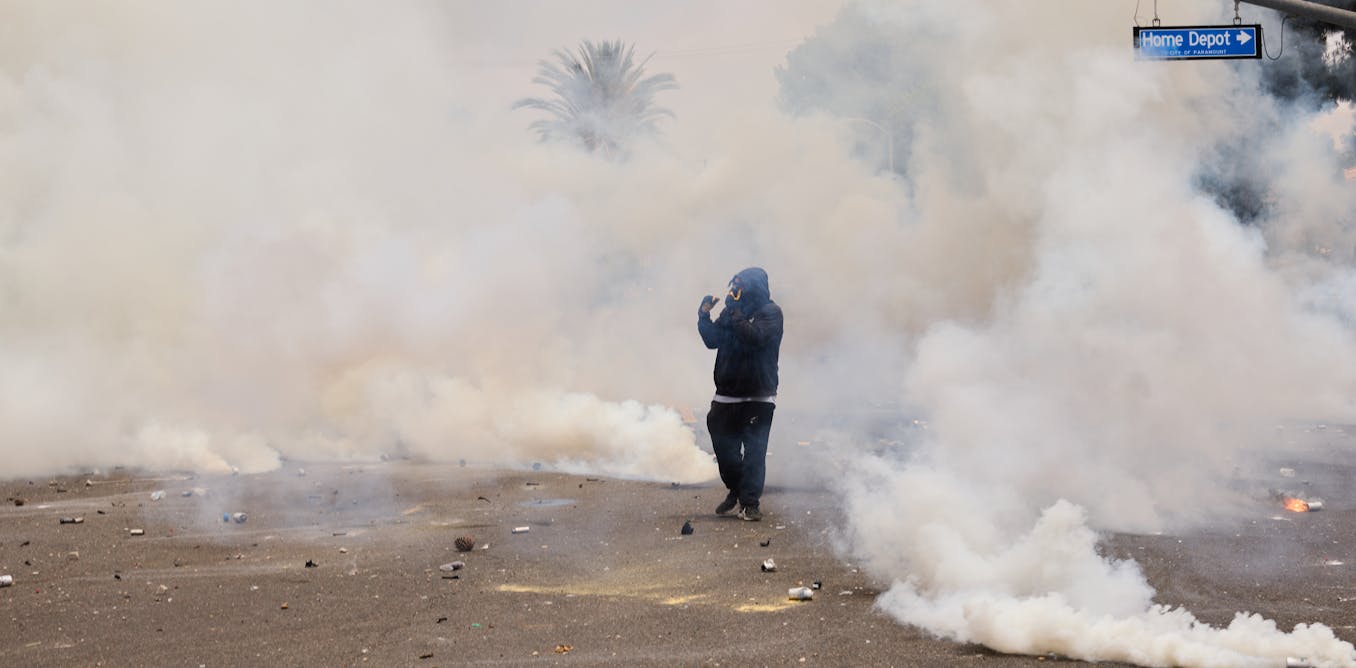Months of relentless exchanges between Israel and Lebanon’s militant group Hezbollah have seen mass civilian evacuations and widespread death, injury and destruction.
The violence has worsened since early June, accompanied by increasingly heated rhetoric. Both sides have prevented the tit-for-tat attacks from escalating into a full-blown war, recognizing the likely catastrophic consequences. The question is whether this fragile containment can hold in the future.
In ominous language, Israeli Prime Minister Benjamin Netanyahu suggested on June 23 that more of the country’s troops would soon be freed up to be transferred to the north to confront Hezbollah. A few days earlier, CNN reported that Israel was moving Iron Dome batteries from the south to the north in preparation for a possible war with Hezbollah.
As a scholar of Lebanon and Israel, I have closely followed the domestic dynamics in both countries.
What is at stake is enormous, with consequences that I believe far exceed the ongoing Israel-Hamas conflict. The tension between Hezbollah and Israel has exposed the basic fact that the war in Gaza is in many ways also a war over hegemonic power in the broader Middle East. It risks drawing the U.S. further into this potential abyss, something that has nudged Washington into increasing diplomatic efforts to keep a lid on Israel-Hezbollah violence.
Regional dynamics
Hezbollah, a group that is seen as a proxy of Iran but with its own domestic concerns, risks dragging Lebanon into a war unwanted by most Lebanese. While claiming solidarity with Hamas and the Palestinian cause, Hezbollah is not driven by the global call for justice for Palestinians but rather by its alignment with Iran’s long-term goal of eliminating Israel and establishing a Palestinian state, governed by Hamas.
Mahmoud Zayyat/AFP via Getty Images
Iran’s regional rivals, particularly Saudi Arabia and the Gulf states, are closely monitoring how Iran uses the Gaza conflict and growing violence on the Lebanon-Israel border to advance its regional interests. Russia, supported by Iran in its war against Ukraine, is watching too, viewing this conflict as a means to weaken the United States.
Israel, meanwhile, handles the evolving crisis on the country’s northern border from a position of increased weakness in its struggle for regional hegemony with Iran. Critics have accused Israel’s far-right government of lacking sufficient strategic thinking about the goals of the current conflict.
Such strategic myopia, they argue, disregards Israel’s need to retain positive relationships with its regional and global allies, first and foremost with the United States.
Instead of devastating Gaza after the Oct. 7 massacres by Palestinian militants, Israeli leadership could have used the war to strengthen its relationship with majority-Sunni states in the Middle East and capitalize on its alliance with the U.S. to ensure regional support for the Jewish state. But the Israeli government’s adamant refusal to entertain any ideas about constructive political engagement with the Palestinians is leading to a drastic erosion of Israel’s ties with the regional actors that otherwise would be willing to align with the Jewish state again Iran.
Potential for US-Iran conflict
A full war between Israel and Hezbollah would likely set the entire region on fire, involving Iran and its proxies. It could also drag the U.S. into direct confrontation with Tehran – a terrifying scenario that President Joe Biden has been trying to prevent since Oct. 7.
Unlike the war against Hamas – in which American support for Israel is restricted to diplomacy and arms supply – a war with Hezbollah may compel the U.S. to provide concrete combat aid, as it did in April in a counter to retaliatory attacks by Iran and its proxies on Israel.

Photo by Mahmoud Zayyat/AFP via Getty Images
Hasan Nasrallah, Hezbollah’s secretary general, has even extended the geographical scope of the conflict by threatening Cyprus, declaring that his organization would target the island if it cooperated with Israel during the war.
Washington is clearly very worried about the consequences of Israel-Hezbollah fighting escalating. Since the early days of the Gaza war, the U.S. has been trying to negotiate an Israeli-Lebanese agreement that would involve the withdrawal of Hezbollah’s forces from the border zone and its replacement with international forces and the Lebanese army.
In exchange, the American proposal suggests, Israel and Lebanon would form a boundary commission to address once and for all Lebanese and Israeli grievances over the location of their shared boundary line.
But as the Hezbollah-Israel war of attrition drags on, it is making any such deal harder.
In Israel, the pressure from conservative and religious sectors and from residents of the north to go to war with Hezbollah is mounting. Recent polls suggest that the majority of Israeli Jews would like the Israel Defense Forces, or IDF, to go to war against Hezbollah “with full force.”
The IDF, on the other hand, is sending mixed messages. Its spokesman recently delivered a belligerent message that the moment of truth is fast approaching in regards to the decision to go to war. Meanwhile, senior generals, including the chief of staff, have noted that after nine months of fighting, the IDF is overly stretched and worn out, and the opening of a front against Hezbollah cannot occur before the army is reenergized and regrouped.
Israel at a vulnerable moment
As for Netanyahu, the once cold and risk-averse political realist is now risking a scenario that might lead to the country’s total strategic defeat, undermining the security and viability of an Israel integrated in regional politics. There has been grave concern since January that if Netanyahu thinks that a full war with Hezbollah would serve his narrow personal interests, he could force Israel into that war. We may be advancing toward the moment of truth of this fear.
Hezbollah, on the other hand, continues its pressure on Israel, increasing the gamble of full conflagration, recognizing that Israel is potentially at its most vulnerable moment perhaps since the 1948 war.
In fact, given Iran and Hezbollah’s long-term strategic goals of eliminating Israel, the continuation of this war of attrition is paying off, even if the price is the continued economic and political spiraling down of Lebanon.
The Americans and the French – Lebanon’s former colonial creator and master – have been working hard to offer diplomatic ways out of this crisis. From the very beginning, Hezbollah has said it would cease its cross-border fire if and when a cease-fire agreement is reached in Gaza.
But at this stage, neither Israel nor Hamas leadership seems eager to reach that point. Rather, it seems as if the scenario that Hamas hoped would be realized after Oct. 7 – that its allies in the so-called Axis of Resistance would join the war and attack Israel across multiple fronts – is only more likely.
In short, the Lebanon-Israel border is at present a combustible front at risk of explosion.
Of course, continuous mutual deterrence between Israel and Hezbollah may hold both sides back, in a similar fashion as mutually assured destruction – or MAD – held back the U.S. and Soviet Union during the Cold War. And U.S.-led efforts are also aggressively seeking to tamp down the flames.
But without any major diplomatic breakthrough, the situation will certainly continue to fester and could erupt into a far deadlier war than even the one that has been going on since Oct. 7.




